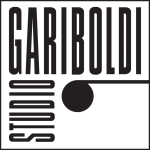Jesús Rafael Soto (Ciudad Bolìvar, Venezuela 1923 – Paris, France 2005), painter and sculptor, was one of the leading exponents of Kinetic art .
After his studies at the Escuela de Artes Plásticas in Caracas, from 1947 onwards, while working as the director of the Escuela de Bellas Artes in Maracaibo, he began to be interested in geometric abstraction.
In 1950 he moved to Paris and, shortly after arriving, participated to an exhibition at the Salon des Réalités Nouvelles and made the acquaintance of artists such as Vasarely, Klein, Tinguerly, Bury e Spoerri.
In 1955 he exhibited with ZERO Group and took part in the exhibition Le Mouvement at Denise René gallery, a show that launched the movement of the Kinetic art.
Trying to go beyond the two-dimensional representation, the artist explores three-dimensionality by introducing movement thanks to a device of repetition or by overlapping layers of painted plexiglas. Using this device, in 1957, he produced his first Vibrations series – works made by setting a tangle of metal wires o various materials found in the street against a striped black and white background.
Systemizing this method, Soto began overlapping various elements on striped grounds, such as suspended mobile rods, metal squares or what he called “Tes” – small T-shaped pieces of metal.
In 1967 he produced his first Penetrables, works made of nylon strands and thin rods hanging in space.
In 1968 two major solo exhibitions took place at the Kunsthalle in Bern and at the Stedelijk Museum in Amsterdam. More solo exhibitions followed, at the Musée de la Ville de Paris in 1969, at the Guggenheim Museum of New York in 1974 and at the Museo de Arte Contemporáneo de Caracas in 1983.
Soto was commissioned to make numerous monumental works, such as: two murals Mur cinétique at UNESCO headquarters in Paris (1969), Hall and restaurant of the personnel at the Grand Hall de la Régie Renault, also in Paris (1975), Suspended Virtual Volume at the Royal Bank of Toronto (1977), Volumen Virtual Suspendido at the Centro Benaven, in Caracas (1979) and the Volume Virtuel at the Centre Pompidou (1987).
In 1973, Soto built the Museo de Arte Moderno Jesús Soto in Ciudad Bolivar, that house considerable collection of his works and works by avant-garde artists, such as Arp, Malevich e Man Ray.
After his studies at the Escuela de Artes Plásticas in Caracas, from 1947 onwards, while working as the director of the Escuela de Bellas Artes in Maracaibo, he began to be interested in geometric abstraction.
In 1950 he moved to Paris and, shortly after arriving, participated to an exhibition at the Salon des Réalités Nouvelles and made the acquaintance of artists such as Vasarely, Klein, Tinguerly, Bury e Spoerri.
In 1955 he exhibited with ZERO Group and took part in the exhibition Le Mouvement at Denise René gallery, a show that launched the movement of the Kinetic art.
Trying to go beyond the two-dimensional representation, the artist explores three-dimensionality by introducing movement thanks to a device of repetition or by overlapping layers of painted plexiglas. Using this device, in 1957, he produced his first Vibrations series – works made by setting a tangle of metal wires o various materials found in the street against a striped black and white background.
Systemizing this method, Soto began overlapping various elements on striped grounds, such as suspended mobile rods, metal squares or what he called “Tes” – small T-shaped pieces of metal.
In 1967 he produced his first Penetrables, works made of nylon strands and thin rods hanging in space.
In 1968 two major solo exhibitions took place at the Kunsthalle in Bern and at the Stedelijk Museum in Amsterdam. More solo exhibitions followed, at the Musée de la Ville de Paris in 1969, at the Guggenheim Museum of New York in 1974 and at the Museo de Arte Contemporáneo de Caracas in 1983.
Soto was commissioned to make numerous monumental works, such as: two murals Mur cinétique at UNESCO headquarters in Paris (1969), Hall and restaurant of the personnel at the Grand Hall de la Régie Renault, also in Paris (1975), Suspended Virtual Volume at the Royal Bank of Toronto (1977), Volumen Virtual Suspendido at the Centro Benaven, in Caracas (1979) and the Volume Virtuel at the Centre Pompidou (1987).
In 1973, Soto built the Museo de Arte Moderno Jesús Soto in Ciudad Bolivar, that house considerable collection of his works and works by avant-garde artists, such as Arp, Malevich e Man Ray.



